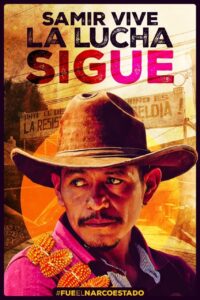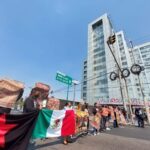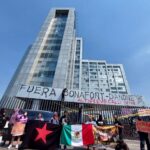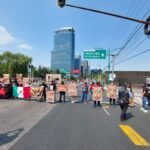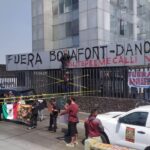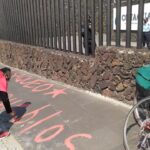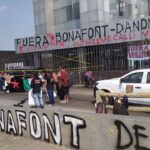Sorry, this entry is only available in Español. For the sake of viewer convenience, the content is shown below in the alternative language. You may click the link to switch the active language.
Desde Slumil K’ajxemk’op – Tierra Insumisa (antes Europa), nos sumamos a las exigencias de verdad y justicia para nuestro compañero Samir Flores, en este tercer aniversario de su asesinato y gritamos ¡Basta! a la represión sistemática en contra de lxs que levantan la voz.
Hace tres 3 años, el 20 de febrero del 2019, Samir Flores Soberanes, incansable defensor de la tierra, de los derechos de su pueblo y de su tierra, campesino náhuatl, comunicador y fundador de « Radio Comunitaria Amiltzinko », integrante del Congreso Nacional Indigena (CNI), firme opositor al Proyecto Integral Morelos (PIM) e impulsor de la formación del Frente de Pueblos en Defensa de la Tierra y el Agua-Morelos Puebla Tlaxcala (FPDTA-MPT), fue asesinado a balazos frente a su casa. Unos días antes, Samir Flores había denunciado públicamente en un foro organizado por el gobierno, al cual asistió Andrés Manuel López Obrador (AMLO), la demagogia y la manipulación de las supuestas « consultas populares » que solo sirven para imponer megaproyectos, simulando un acuerdo con las comunidades afectadas. El Frente de Pueblos en Defensa de la Tierra y del Agua (FPDTA) había propuesto al gobierno regional y federal un diálogo mediante una carta pública dirigida a López Obrador, pero el gobierno respondió con balas.
Son esas las mismas balas las que el pasado viernes 11 de febrero mataron a Francisco Vázquez, presidente del Consejo de Vigilancia de la Asociación de Usuarios del Río Cuautla (ASURCO).
El Compañero Francisco fue asesinado cuando se encontraba trabajando su parcela en el ejido de Abelardo, municipio de Ayala, en el estado de Morelos. Desde 2019 Francisco Vazquez había puesto en marcha varios amparos contra el robo del agua en su comunidad. El agua iba a ser destinada para la termoeléctrica. El 10 de febrero de 2022, durante una reunión para tratar la destitución de Rogelio Plascencia Barreto como Presidente de ASURCO, Francisco declaró temer por su vida y hacer responsable a este último por cualquier cosa que le pasara. Al día siguiente Francisco fue asesinado y, a pesar de que él había hecho públicas las amenazas de muerte en su contra, el gobierno del estado de Morelos declaró descartar una relación entre su asesinato y el conflicto generado por el mal uso del agua en la termoelectrica de Huexca, la cual también es parte del llamado Proyecto Integral Morelos (PIM), una iniciativa energética e hidro-extractivista, constituida por dos centrales termoeléctricas, un gasoducto y un acueducto que atraviesa los Estados de Morelos, Puebla y Tlaxcala. Es impulsada por el Estado mexicano en asociación con empresas españolas como Abengoa, Elecnor y Enagás y la italiana Bonatti. Numerosas recomendaciones científicas se han pronunciado en contra de este proyecto, ya que atraviesa una zona sumamente sísmica donde se localizan volcanes activos.
Durante su campaña electoral López Obrador prometió cancelar este proyecto, por lo cual muchos habitantes de la zona le dieron su voto. Apenas elegido, anunció rápidamente la « consulta popular » con fin de legitimar la continuidad del proyecto, siendo perfectamente consciente de la graves consecuencias que esto provocaría: destrucción del tejido social, desplazamientos, contaminación y violencia. El PIM es un elemento clave del plan del supuesto « desarrollo » de México, ya que conectaría el norte con el sur del país, y enlazaría otros mega-proyectos como el mal nombrado Tren Maya y el corredor transísmico; este último conectaría los dos océanos a través de una red de autopistas y vías de tren, que servirían de conducto y producción de energía, creando así zonas francas al servicio de las grandes empresas multinacionales. Este plan de «desarrollo» esta siendo impulsado fuertemente y a cualquier precio por el gobierno de López Obrador.
« La termoeléctrica se lleva nuestra agua y nos devuelve sangre », gritaron los ejidatarios del movimiento Ayala en Defensa del Aguaal momento de recibir la noticia del asesinato del compañero Francisco. Ellos y ellas, así como el FPDTA, responsabilizan a Rogelio Plascencia, a la Comisión Federal de Electricidad (CFE) y al gobierno Mexicano por cualquier cosa que les pudiera pasar. Si este asesinato, al igual que el de Samir Flores, no se investiga en el contexto de una lucha contra un megaproyecto, se demuestra la impunidad y la violencia en contra de todos lxs defensores del territorio.
Como colectividad hemos sufrido desde siempre el injusto castigo inducido a las y los defensores de la tierra y activistas sociales. A esto se suman detenciones ilegales, desapariciones forzadas y asesinatos a periodistas, seis han sido asesinados en lo que va de este 2022.
Por si todo esto no fuera suficiente el 15 de febrero fue desalojada con una masiva y desmedida presencia policial y de la Guardia Nacional, La Casa de los Pueblos, Altepelmecalli, en el municipio de Juan C. Bonilla en el estado de Puebla. Lo que fuera una fábrica embotelladora de agua perteneciente al consorcio transnacional Danone-Bonafont fue ocupada por los habitantes indigenas nahuas como protesta por los millones de litros de agua que la embotelladora robaba a la comunidad, secando los ríos y pozos de la región. En este lugar los habitantes sembraron vida y pusieron en marcha proyectos de salud comunitaria, agricultura, ganadería y organizaron cooperativas, todo para el bien colectivo. La toma de la planta embotelladora fue sin duda una provocación para el gobierno regional y federal, así como para el capitalismo. Por lo mismo, la orden del desalojo de Altepelmecalli vino desde las altas esferas del gobierno.
Y porque la lucha sigue! se ha anunciado el recorrido de la Caravana en contra de los megaproyectos mineros, gasoductos, hidroeléctricas, parques eólicos, entre otros, que saldrá del Altepelmecalli el 22 de marzo de 2022 y terminará en la región del Istmo el 22 de abril del mismo año, sólo después de haber recorrido los territorios afectados.
¡Basta de proyectos de muerte que atentan contra la vida y la libertad de los pueblos!
¡Basta del capitalismo que asesina impunemente a periodistas y a lxs defensores de la tierra!
Desde la Europa insumisa – Slumil K’ajxemk’op repudiamos :
- La sistemática violación a los derechos humanos en México.
- El cobarde desalojo del Altepelmecalli, la Casa de los Pueblos,
Desde la Europa insumisa -Slumil K’ajxemk’op exigimos:
- Que se investiguen a profundidad los asesinatos de Francisco Vázquez y de Samir Flores y se lleve a proceso a los asesinos.
- Que se investiguen a profundidad los asesinatos de lxs periodistas y se lleve a proceso a los asesinos.
- La salida de la Guardia Nacional y la Policía Federal de La Casa de los Pueblos.
Desde la Europa insumisa – Slumil K’ajxemk’op:
- Nos solidarizamos con la Caravana de los Pueblos por la Vida y Contra los Megaproyectos
¡Verdad y justicia para Samir Flores y Francisco Vázquez!
Solidaridad con el FPDTA-MPT !
¡SAMIR VIVE, FRANCISCO VIVE! LA LUCHA SIGUE! ¡VIVA AMILCINGO!
¡Todxs somos Samir, todxs somos Francisco: ellos son semilla y su lucha florece en otros continentes!
¡VIVA LA LUCHA DE LOS PUEBLOS!
¡JUSTICIA, TIERRA, AGUA Y LIBERTAD!
¡No se mata la verdad matando periodistas!
ALEMANIA
Café Libertad Kollektiv, Hamburgo
AUSTRIA
Colectivo Acción Solidaria Viena
Gira por la Vida Austria
KOMBINAT. Taller de Pensamiento
KINOKI. Autogestón Audiovisual
BELGICA
Casa Nicaragua
Grupo CafeZ
Identité Amérique indienne
Écologie sociale Liège
ESTADO ESPAÑOL
Comitè d'Acollida Zapatistes - Illes Balears i Pitiüses
Yogaknowhow - Islas Canarias - estado español
Afip - Malaga- estado español
Ateneo Libertario-Segovia-estado español
Cal Cases, Catalunya.
Ecologistas en Accion Badajoz,Extremadura
Comité de Solidaridad con América Latina
(COSAL) Asturias
Caracol Cantabria
Comité de Solidaridad con los Pueblos-Interpueblos (Cantabria)
Foro Social de Segovia
Gong per la defensa dels Drests Humans i dels Pobles
Caracol Gredos
Encuentro de Luchas por la Vida - Madrid:
Acción Poética Revolucionaria - Madrid
Alkarama ‐ Movimiento de mujeres palestinas
Asamblea 8M Getafe
Asamblea 8M Latina
Asamblea de Vivienda Carabanchel
Asociación Arte y Memoria - Madrid
Asociación Cultural Cofradía Marinera de Vallekas.
Asociación para la Recuperación de la Memoria Histórica (Cuenca)
Asociación Teatro de la Tierra
Bienvenidxs Refugiadxs Alcalá de Henares
Centro de Documentación sobre Zapatismo (CEDOZ)
Centro Revolucionario de Arqueología Social (CRAS)
Centro Social La Villana de Vallekas
Centro Social Autogestionado La Enredadera de Tetuán
Colectivo Histéricos
Comisión Migración y Antirracismo 8M Madrid
Comité de Emergencia Antirracista
Confederación General del Trabajo (CGT) Madrid-Castilla la Mancha-Extremadura
Confederación General del Trabajo (CGT) Zona Sur ‐ Madrid
Confederación General del Trabajo (CGT) Sanidad ‐Madrid
Confederación General del Trabajo (CGT) Metal‐Madrid
Confederación General del Trabajo (CGT) SOV Corredor del Henares
Confederación Nacional del Trabajo (CNT), Comarcal Sur ‐ Madrid
Confederación Nacional del Trabajo (CNT), Colmenar Viejo
Confederación Nacional del Trabajo (CNT), Sierra Norte
Coordinadora Anti-privatización de la Sanidad (CAS) Madrid
Coordinadora Antifascista de Madrid
Ecologistas en Acción
En Madrid Otra Italia
Escuela Popular de Prosperidad
Espacio Sociocultural Liberado Autogestionado EKO
Fundación Anselmo Lorenzo (CNT)
Guerreros de Luz ‐ Danzantes Mexicas
Instituto de Imaginación Radical (IRI)
Juventud Antifascista de Hortaleza
La Comuna, asociacion de presxs y represaliadxs por la dictadura
La Parcería
La Hedera
La Trueca
Marea Azul 15M
Madrid Agroecológico
Movimiento Marika de Madrid
Mostoles feminista
Mujeres CGT ‐ Madrid
Mujeres Libres de Madrid
Plataforma contra la Privatización del Canal de Isabel II
Plataforma por Honduras
Pueblos vivos: Fraguas y Navalquejigo
Red de Hondureñas Migradas
Red Solidaria de Acogida
Redretro. Sistema de Transporte Onírico
Rojava Azadi Madrid
Samidoun España
Vallekanas Feministas Km9
Women Defend Rojava - Madrid
Y retiemble! Espacio de apoyo al Congreso Nacional Indígena y EZLN desde Madrid
EUSKAL HERRIA
Asociación Lakabe, Nafarroa, Euskal Herria
Lumaltik Herriak
TxiapasEKIN
CATALUNYA
Ass. Solidaria Cafè Rebeldía-Infoespai, Barcelona
FINLANDIA
Colectivo Armadillo Finlandia
FRANCIA
Union syndicale Solidaires, Francia
Confédération Nationale du Travail - CNT- Francia
Comité de Solidaridad con los Pueblos de Chiapas en Lucha - Paris, Francia
Espace Autogéré des Tanneries - Dijon - Francia
Quartier Libre des Lentillères - DIjon - Francia
Union Communiste Libertaire (UCL)
Zapateria Toulouse
MUT VITZ 31
108. Collectif de Solidarité avec la Peuple du Nicaragua (CSPN)
Gilets jaunes de Saillans
collectifs d'habitant.es de la ZAD NDDL
GRECIA
Colectivo Calendario Zapatista
Asamblea Libertaria Autoorganizada Paliacate Zapatista
HOLANDA
Denisse Vega de Santiago
ITALIA
Associazione Ya Basta Êdî Bese (noreste de Italia)
Cooperazione Rebelde Napoli (sur de Italia)
Associazione Jambo ( Fidenza- Italia)
PAÍS VALENCIÀ
Assemblea de Solidaritat amb Mèxic
CHIPRE
Colectivo Ramona
REINO UNIDO
Liverpool & Manchester Zapatista Collective
Liverpool Social Centre 'Next to Nowhere'
Zapatista Solidarity Network - South East
London Mexico Solidarity
Scotland Zapatista
Feminist Assembly of Latin Americans (FALA)
Justice Mexico Now!
Mexico Lindo y Querido UK
Liberation Org - Movement for Colonial Freedom
ALEMANIA
Citizens Summons, Bonn
Ventana al Sur, Hannover
Solidarisches Mittelhessen, Marburg
Coordinación "Gira Zapatista" Berlín
Ecuadorminka
Perrxs del futuro
Voces de Guatemala en Berlín
Gruppe B.A.S.T.A. Münster
Kollektive Kaffeerösterei La gota negra, Hamburg
PORTUGAL
Coordinadora Gira Pela Vida
Museum for the Displaced
DiEM25 Portugal
Circuloscopio Associação Cultural
SUIZA
Coordinación Suiza Gira por la Vida
Solidaridad Directa con Chiapas, Zurich
MEXICO
Grupo de Trabajo No Estamos Todxs
Concepción Suárez Aguilar.
Casa comunitaria Lidxi bandaaga
La Voz del Anáhuac
Elcor Chiapas
Frente de Trabajador@s por el Derecho a la Salud y Seguridad Social
Sector de Trabajadores Adherentes a la Sexta
Desarrollo Económico y Social de los Mexicanos indígenas A. C.
Plantón de la Resistencia en Huexca, Morelos
Plantón de la Resistencia en ASURCO, Morelos
Movimiento Autónomo Multisectorial Universal de Trabajadores (MAMUT)
Okupa ChiaPaz
Excorio Herbas Meas Collective
Colectivo Aequus.-Promocion y Defensa de Derechos Humanos
Coordinación de Familiares de Estudiantes Víctimas de la Violencia
Colectivo Transdisciplinario de Investigaciones Críticas
Colectiva Katari
Colectivo de Familiares de Presos en Lucha
Colectivo Renovador Estudiantil Autónomo-UNAM
Coordinadora de Estudiantes y Colectivos de la Facultad de Derecho-UNAM
Instituto Cultural Autónomo «Rubén Jaramillo Ménez», Morelos
SextaTeatritoXlaLibre Yucatán
Grupo de Trabajo No Estamos Todxs
Red de Resistencia y Rebeldía Ajmaq
¡Compas Arriba!
Cátedra itinerante Carlos Montemayor
Colectiva Autónoma de Colaboración Social
Colectivo Flor de Asfalto
Colectivo Zapatista Neza
Frente Cívico Pro Defensa del Casino de la Selva
Tierra y Libertad de Cuautla Morelos México.
Por la Coordinación Metropolitana, Anticapitalista y Antipatriarcal con el CIG, suscriben: Organizaciones, Colectivos Redes de Resistencia y Rebeldía, adherentes a la Sexta Declaración de la Selva Lacandona e
Café “Zapata Vive”,
Regeneración Radio,
UPREZ Benito Juárez,
Colectivo Aequus.- Promoción y defensa de Derechos Humanos,
Coordinación de Familiares de Estudiantes Víctimas de la Violencia,
Comunidad Indígena Otomí residentes en la CDMX,
Casa de los Pueblos y Comunidades Indígenas “Samir FloresSoberanes”,
Voces del Viento, Poesía y Canto,
Las Sureñas en resistencia y rebeldía,
Resonancias Radio,
Laboratorio Popular de Medios Libres,
Noticias de Abajo,
Zapateando Medios Libres,
Plantón por los 43,
Colectivo La Ceiba,
Brigada de Salud Zapatista Pantitlán,
Mujeres que Luchan, Resisten y se Organizan,
Bazar Rebelde,
Colectivo Odontología Comunitaria Sembrando Sonrisas,
Escuelita Autónoma Otomí,
Geografias dislocadas:
Mujeres y Disidencias de la Sexta en la Otra Europa y Abya Yala-Red de Resistencia y Rebeldia
INDIVIDUOS/AS
Javier Pérez Orozco
Claudia Rodríguez Ramírez
Miriam García del Saz.
Elia Hanke
Claudia Mora
Oscar Bautista Ruiz
Maria Ignacia Ibarra
Alicia Dorantes Camacho
Silvia Reséndiz Flores
Diana Sofía Peniche Fuentes
Gilberto López y Rivas,
Blanca Ibarra.
Roxana Bolio
Florina Mendoza Jiménez
Leonel López
María de Lourdes Mejía, Madre de Carlos Sinuhé Cuevas Mejía
Roberto Rodríguez Contreras “Gato”.
Diana Fuentes
Duarte Ferrín
Lizeth Clavellina Angeles
Patricia Franco Rodríguez
Elizabeth Ortiz Mora
Amélie Courtemanche
Ana Sophie Salazar
Lorena Salamanca
Rigoverto Albores Serrano
Circe Ariana Carril
Sofía Peñafiel Ibarra
Sociólogo Fernando Alan López Bonifacio.
Maestra en Estudios Latinoamericanos Brenda Porras Rodríguez
Cassandra Cárdenas Pimentel
Promotora y Gestor Cultural
Sophie Hartmann
Efraín Rojas Bruschetta
Astrid Velasco Montante
Enrique Bauza Ferre
Ángel Sánchez Martinez
Luisa Garcia Pelegrin
Teresa González de Chávez
Daniel Pérez Martínez
Elena Morúa
Antonio Bravo Avendaño
Daniel Reyes Lara
Nelly Bocchi
Eduardo de la Torre.
Trinidad Villar
Julen Begiristain Baztan
Vidalia Paulina Mendoza Prado
Gema Peña. Chimeno
Julia Arnaud
Pierina Erazo
Daniela Dreißig
Edo Schmidt
Clara González-Garzón
Angélique Sapolin
________________________________
Desde la capital portuguesa #SamirEsSemilla
la rebeldía florece
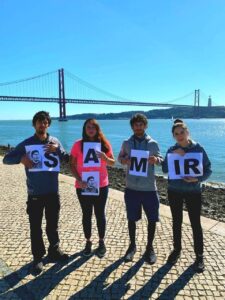
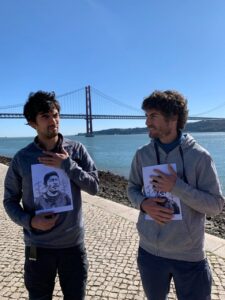 ________________________________
________________________________
#SamirEsSemilla Bilbao (Euskal Herria), Coimbra (Portugal), Vienna (Austria) Donostia (Euskal Herria) ¡Preesentes! (en ese orden)
Desde Slumil K´ajxemk’op, la rebeldía florece
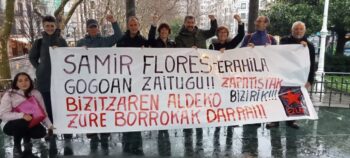
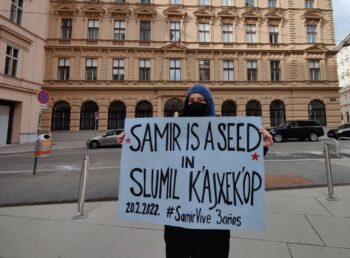
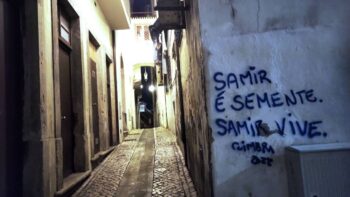
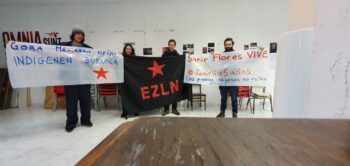 ____________________________________
En Basoa y Larrabetzu (Euskal Herria) #SamirEsSemilla
la rebeldía Florece‼️ Acompañando el llamado
(https://enlacezapatista.ezln.org.mx/2022/02/16/alto-a-la-represion-en-contra-de-los-pueblos-originarios-en-mexico/)
Zapatista en apoyo a la casa de los pueblos, Altepelmecalli (Puebla),
¡País Vasco presente!
____________________________________
En Basoa y Larrabetzu (Euskal Herria) #SamirEsSemilla
la rebeldía Florece‼️ Acompañando el llamado
(https://enlacezapatista.ezln.org.mx/2022/02/16/alto-a-la-represion-en-contra-de-los-pueblos-originarios-en-mexico/)
Zapatista en apoyo a la casa de los pueblos, Altepelmecalli (Puebla),
¡País Vasco presente!
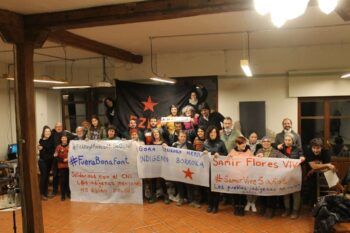
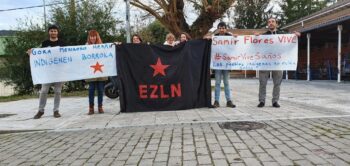 _____________________________________
_____________________________________
En la embajada de México en Londres, Inglaterra #SamirEsSemilla #AltepelmecalliSeQueda #FueraBonafont (20.02.2022)
Desde la capital inglesa con los pueblos en resistencia y rebeldía, respondiendo al llamado (https://enlacezapatista.ezln.org.mx/2022/02/16/alto-a-la-represion-en-contra-de-los-pueblos-originarios-en-mexico/) Zapatista a boicotear a Bonafont
Fotos: London Solidarity Network
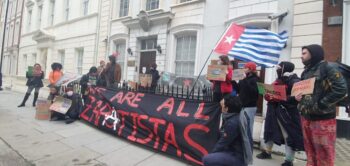
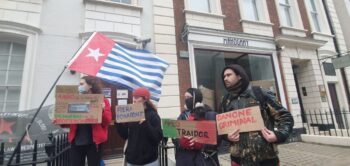
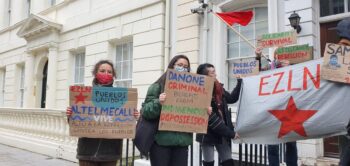

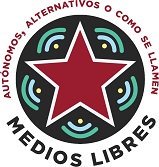





 ____________________________________
____________________________________




